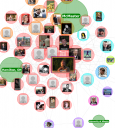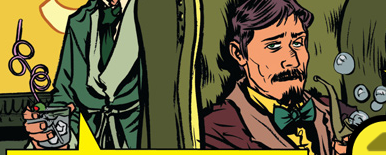
My friend Domenico Fiormonte at l’Università di Roma Tre, Dipartimento di Italianistica, has a blog I just found out about with Paolo Sordi called, Infolet – Informatica e letteratura (Informatics and Litterature.) They write longer thoughtful entries (in Italian) rather than my short ones.
In an entry Dai margini dell’Impero (From the margins of the Empire) Domenico criticizes “anglonorthern” computing humanists at DH 2008 for excessive specialization and excessive focus on electronic texts (and a particularly narrow version of text at that.) He goes on to say that we have known there is an anglo-american hegemony (of two or three centres) in the management, both political and scientific of the digital. (See the paper, “The international debate on humanities computing: education, technology and the primacy of languages” PDF in English for a longer discussion of this). These are strong words that, at the very least, reflect a sense of marginalization of researchers working in the European South on Romance languages and coming from a philological tradition.
I am torn as to how to respond to Domenico, but respond we should because he is willing to say things that many feel. Whether we believe the colonialization rhetoric or not, we should be willing to talk about internationalization internationally (and in multiple languages.) My response to the entry and the subsequent comments can be read in the comment I left.
The issue of internationalization and marginalization resonates partly because I work in Canada and here we have a close, but not always equal, relationship with researchers in the US and the UK. To be fair, I think we feel in Canada that we are welcome in digital humanities societies and that US colleagues are more than willing to collaborate. We also are aware of our own fetish of the issue that can distract from meaningful collaboration. If anything we may have a greater role internationally than the size of the population would merit. Our problem is that we ourselves can get caught marginalizing our Québécois colleagues. We have our own two-nations version of this marginalization problem – how to foster a truly bilingual research community avoiding “two solitudes” of research silos, an English rest-of-Canada community and a francophone Québécois community? Our Society for Digital Humanities / Société pour l’étude des médias interactifs is a real and sustained attempt to address bilingual research. Ray Siemens and Christian Vandendorpe deserve a lot of credit for their ongoing efforts in this regard, but we have a ways to go.



